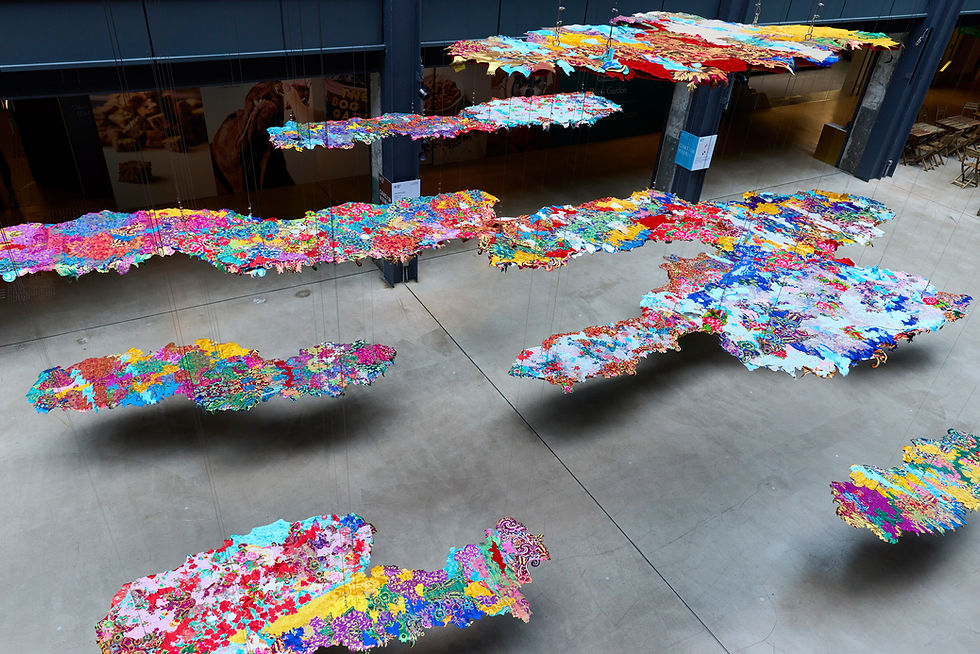World-renowned Architect Toyo Ito: Architecture of Sustainability and Humanity
- Gen de Art

- Mar 29, 2023
- 4 min read
Born in 1941, Toyo Ito is the representative of Toyo Ito & Associates, Architects. His projects range far and wide, and some of the most notable include Sendai Mediatheque, Tama Art University Library, and National Taichung Theatre. He has received numerous awards, such as the Pritzker Architecture Prize, the Venice Biennale, and the Golden Lions at Architectural Institute of Japan Award. We spoke to him about the future of Japanese architecture and urban design.

Creating Small Communities in Tokyo
Tokyo - a metropolis where tradition intermingles with innovation. Ito shares his concerns about how the unique personality of each neighbourhood is becoming lost due to the increasing prevalence of high-rise buildings and redevelopment.
In Tokyo, meeting new people by chance is rare, and it’s not unusual to know nothing about one’s next-door neighbours. He hopes to create small communities scattered across the capital.
One of his initiatives is ZA-KOENJI Public Theatre, established in 2008 in the district of Koenji. Ten years have passed since its completion, and now, some people have become so familiar with it that they come and go as if it was their own home.
As an architect, Ito endeavours to create a space which gives rise to heartfelt connections between one person and another.

Reviving the Animal Sensibility in Human Beings
Ito also sounds the alarm for certain harmful effects of the rapid increase in artificial environments due to verticalisation and redevelopment: “When people spend a long time in a place where they can’t even tell whether it’s raining or sunny outside, their awareness of physical sensations will become numb.”
“That’s why,” he continues, “I want the architecture I create to enable people to regain their animal sensibility.”
A turning point which strengthened his resolve to pursue this direction was when he designed Sendai Mediatheque (2000), regarded as one of his most notable works. It forms a fluid space which allows users to move freely within its structure, keeping any walls that break up spaces to the bare minimum. “People can use the building as if they’re in a park,” says Ito.
“Traditional Japanese architecture comes with a garden and an engawa (a veranda-like, wood-floored corridor facing the garden), so if you slid open the shoji doors, the room would be directly connected to the outside,” he explains. “It’s often required of modern architecture to build a boundary between inside and outside for the purposes of security and management. That’s inevitable. Nevertheless, I’m interested in recreating nature within my architecture.”
Ito always keeps the people who use his architecture in mind while designing them. Even so, until he became involved in Sendai Mediatheque, he had the impression that architecture wasn’t very warmly received by the general public. When he visited the site after completion, however, he saw people using it as though it had been there for a decade, and his worries were washed away. He recalls how delighted he was in that moment: “I’ve never felt more gratified to have worked as an architect.”

Cultivating a Sustainable Society
Last year, Ito’s office celebrated its 50th anniversary. Looking ahead in the future, he has various projects that he wants to focus on. The first is “to pursue architectural designs that make people feel like they’re in nature.” The second is to engage in social activities.
One of those activities is the “Architecture School for Children,” which he began in 2011.
He opened the school to encourage young people. “Nowadays, there are strict regulations for building architecture in Japan, and it’s hard to propose bold ideas as we used to do in the past,” he says. “Young people today are losing hope for the future. I felt the need to put in more effort to call out to them, ‘Let’s dream big!’”
Now, he says, “I have the most fun when I’m teaching elementary school kids. Children around ten to twelve years old can think about architecture without being hemmed in by common sense.
“I’m interested in seeing how far they can maintain their inherent freedom—their ability to think outside the box.”
Ito’s initiative to pass on architectural theory to these architects of the future can be seen as an extension of his continuous efforts at building communal neighbourhoods.


The Common Ground between Wine-making & Making Architecture
In addition, Ito is also making wine in Imabari in Ehime Prefecture. He was always a fan of wine, so that was one motivation behind founding “Winery-for-All on Omishima”—but what really influenced him most was the opening of the Toyo Ito Museum of Architecture, Imabari and his frequent trips to the island of Omishima since then.
In Omishima, where the population is aging, he noticed many patches of abandoned farmland where farmers used to grow mandarins. Ito had the idea that if he turned those lands into vineyards and started making wine, which would appeal to younger generations, it will give new strength to the local community.
The winery was completed in 2019. The project continues to grow, expanding its market through online sales and other venues.
Growing Like a Farmer
For Ito, whose projects revolve around the theme of “relationship with nature,” architecture and wine-making are not so different from each other. “Don’t get me wrong, but in a way, architecture is agriculture,” he says. His words hint at the need to cultivate the ever-changing local neighbourhoods in organic ways into something sustainable, as well as to keep growing the architecture along with the people who use it.
“Contemporary architecture hasn’t integrated enough into the general public,” says Ito. He adds, “First of all, I want people in general to know how fun and free architecture can be.”
With his mild-mannered and candid ways, listening to Ito as he shares his stories is like spending time in a place of tranquility with a gentle breeze stirring the air.



